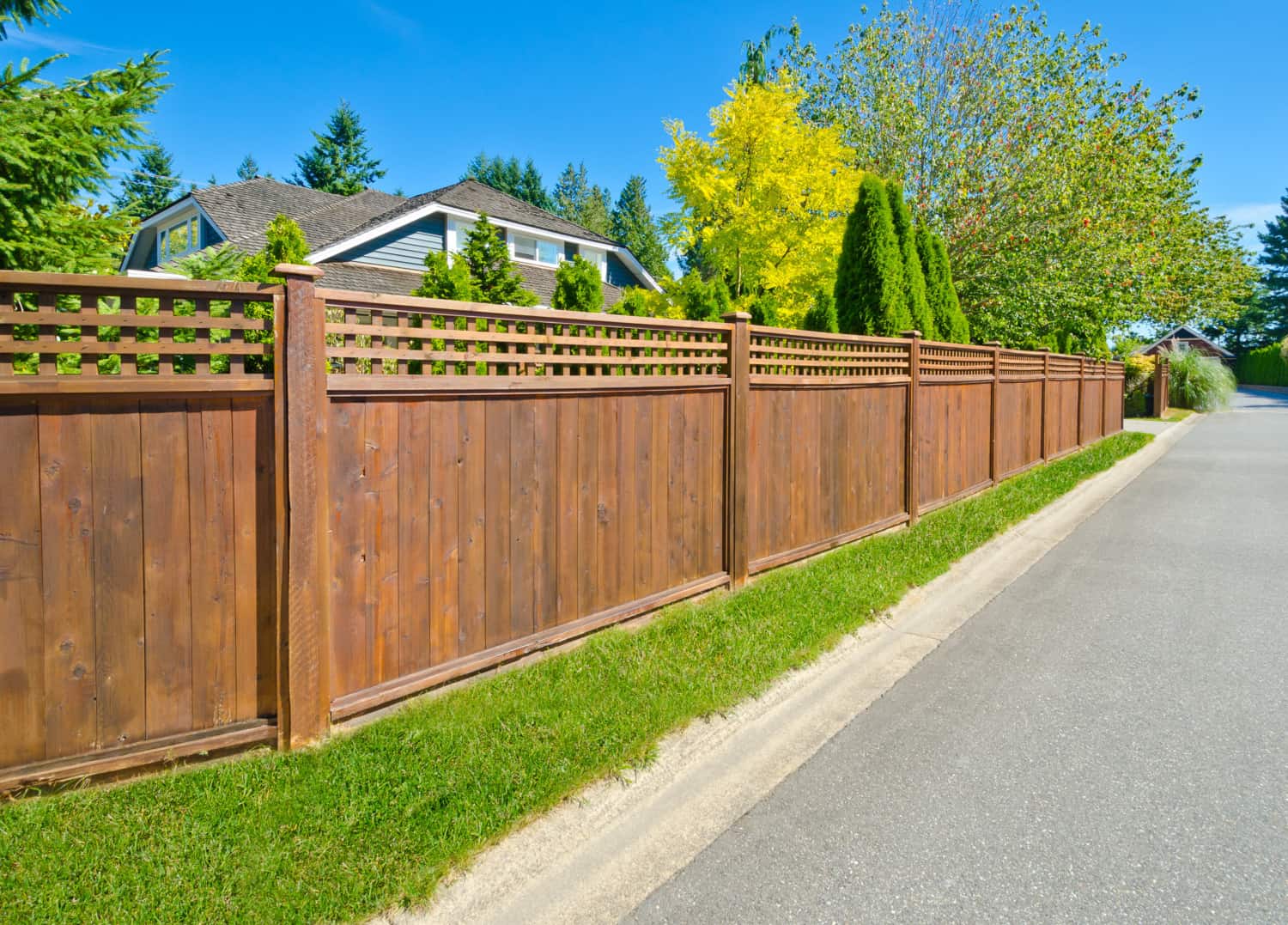All Categories
Featured

When it comes to choosing the right fence material for your building, light weight aluminum, vinyl, and wood are among the most prominent options. Listed below, we damage down the advantages and downsides of these three usual secure fencing materials.
Wood Fence. Pros:
Visual Charm: Timber fencings offer a natural, timeless appearance that complements most sorts of landscaping and style. They can be conveniently customized with paint or stain, offering you the liberty to develop the best color and coating for your residential property. Flexibility: Wood can be made use of to produce a selection of fencing styles, from typical picket fencings to more modern layouts like personal privacy fencings or rustic ranch-style fencings. It's simple to modify or add to over time if your demands transform. Price: Timber is usually extra affordable than vinyl or aluminum, making it an appealing option for homeowners on a budget. The initial price of a timber fencing is typically less than the various other materials. Disadvantages:

Maintenance Demands: Wood fencings call for regular upkeep, consisting of staining, sealing, or painting to protect them from weathering, rot, and pest damage. Without appropriate care, wood can wear away promptly. Toughness: Timber is susceptible to harm from bugs like termites, and it can warp, fracture, or split over time because of direct exposure to the components. In areas with extreme weather, timber may require to be replaced more often than other materials. Minimal Life-span: While timber fences can last for years with correct treatment, they generally have a much shorter life expectancy than vinyl or aluminum fencings. Plastic Fencing. Pros:
Low Upkeep: Among the most significant benefits of vinyl fence is its low upkeep requirements. Unlike timber, plastic does not need to be painted, discolored, or secured. It's immune to fading, fracturing, or warping, making it suitable for house owners that want a hassle-free fence. Toughness: Plastic fences are extremely durable and immune to the components, consisting of UV rays, rainfall, and moisture. They're likewise unsusceptible parasites, such as termites, that can harm timber fencings. Selection of Styles: Plastic fences can be found in a vast array of designs and colors, and lots of simulate the appearance of wood without the maintenance disadvantages. You can pick from personal privacy fences, picket fences, and even more to fit your demands. Long Life-span: With appropriate treatment, plastic fences can last decades, much longer than timber fencings, and they feature warranties that offer assurance. Cons:
Higher Preliminary Expense: While vinyl fences can save money on maintenance over the years, they often tend to have a greater upfront expense than timber fences, which might be a deterrent for some customers. Minimal Modification: While plastic fencings are readily available in a variety of designs and shades, they do not have the modification versatility that wood offers. You're restricted to the pre-designed panels available, which might not suit every distinct visual. Possible for Breaking in Cold Climates: In extreme chilly temperatures, vinyl fences can become brittle and may crack under effect, making them less ideal for areas with freezing winter seasons. Aluminum Fence. Pros:
Resilience and Stamina: Aluminum is a light-weight yet strong product that stands up to rust and deterioration, making it ideal for coastal locations or places with high moisture. Aluminum fencings require very little maintenance and can hold up against the aspects for several years. Visual Appeal: Light weight aluminum fencings offer a smooth, modern-day appearance. They can be found in a range of ornamental styles and can be made use of to create a more sophisticated or contemporary appearance for your residential property. Reduced Upkeep: Aluminum fencings don't call for paint or securing, and they're immune to corrosion and rust, making them exceptionally reduced maintenance in time. Security: Aluminum fencings supply a higher degree of safety compared to plastic or wood fences since of their durable building and construction. They can be geared up with gateways and locks to supply a protected limit around your building. Cons:

Cost: Aluminum fences are often more pricey than timber or plastic fencings, both in regards to products and installation expenses. This higher rate point can be a drawback for budget-conscious property owners. Less Personal privacy: Light weight aluminum fencings generally have a more open design, with pickets spaced apart to enable presence with the fencing. If personal privacy is a concern, this may not be the best option for your home. Prone to Denting: While light weight aluminum is rust-resistant, it can still be dented or bent if struck with pressure, such as by an automobile or heavy equipment. While it won't rust, it may not keep its beautiful look if it obtains harmed. Which Product is Right for You? Choosing the ideal fence material depends on your certain requirements, budget, and long-term strategies for your residential property. On the various other hand, if you need a lasting, safe fence with a sleek look, light weight aluminum might be the appropriate material for you.
Inevitably, consider your environment, maintenance preferences, and aesthetic needs when selecting your fencing material. Each choice has its staminas and weaknesses, however with the best care and installation, all 3 can supply dependable and attractive borders for your building.
Latest Posts
Explore Special Auto Repair Deals in Chicago at Montclare Auto Repair
Published May 25, 25
1 min read
Explore Special Auto Repair Specials in Chicago at Montclare Auto Repair
Published May 25, 25
1 min read
Join WyHy FCU – Top Benefits for Your Future
Published May 24, 25
1 min read